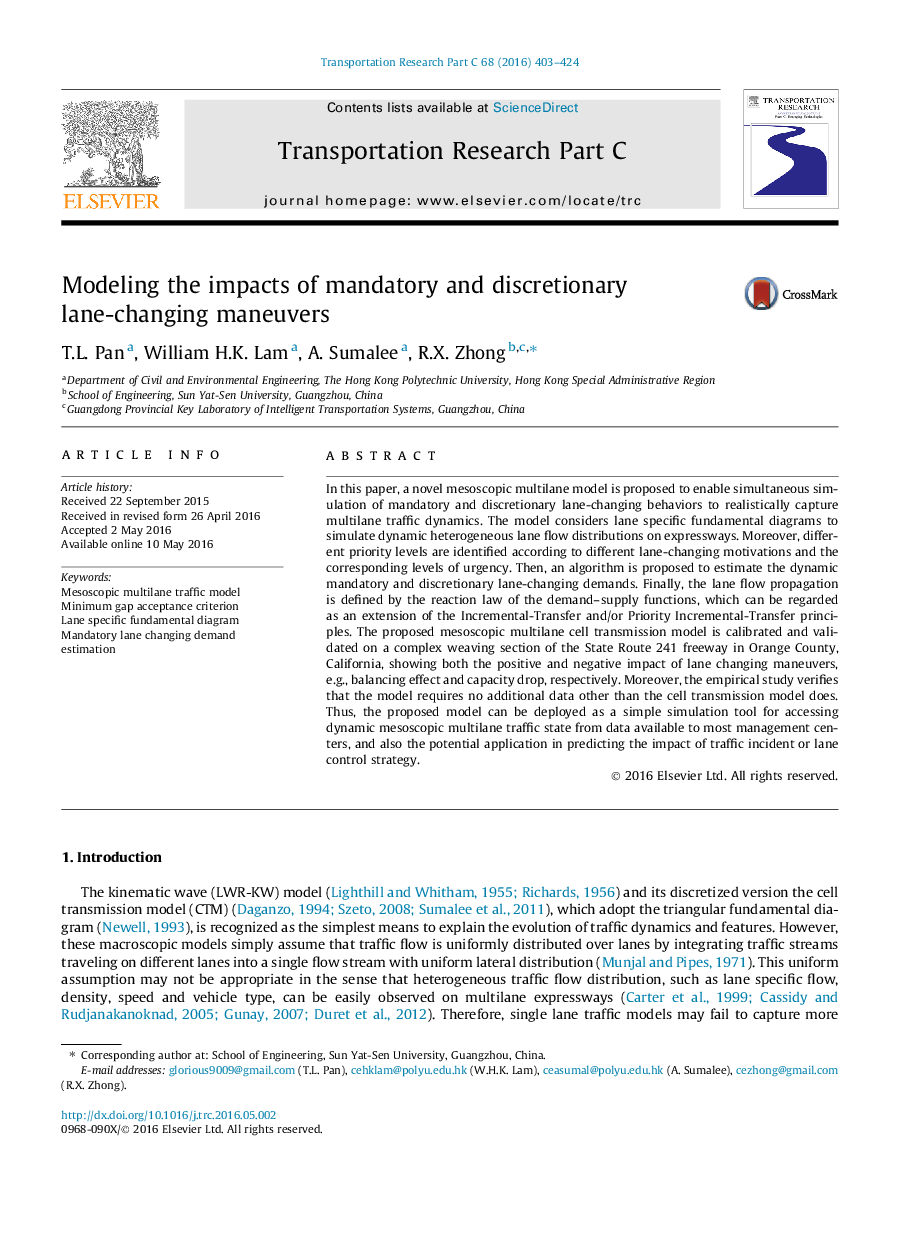| Article ID | Journal | Published Year | Pages | File Type |
|---|---|---|---|---|
| 6936415 | Transportation Research Part C: Emerging Technologies | 2016 | 22 Pages |
Abstract
In this paper, a novel mesoscopic multilane model is proposed to enable simultaneous simulation of mandatory and discretionary lane-changing behaviors to realistically capture multilane traffic dynamics. The model considers lane specific fundamental diagrams to simulate dynamic heterogeneous lane flow distributions on expressways. Moreover, different priority levels are identified according to different lane-changing motivations and the corresponding levels of urgency. Then, an algorithm is proposed to estimate the dynamic mandatory and discretionary lane-changing demands. Finally, the lane flow propagation is defined by the reaction law of the demand-supply functions, which can be regarded as an extension of the Incremental-Transfer and/or Priority Incremental-Transfer principles. The proposed mesoscopic multilane cell transmission model is calibrated and validated on a complex weaving section of the State Route 241 freeway in Orange County, California, showing both the positive and negative impact of lane changing maneuvers, e.g., balancing effect and capacity drop, respectively. Moreover, the empirical study verifies that the model requires no additional data other than the cell transmission model does. Thus, the proposed model can be deployed as a simple simulation tool for accessing dynamic mesoscopic multilane traffic state from data available to most management centers, and also the potential application in predicting the impact of traffic incident or lane control strategy.
Related Topics
Physical Sciences and Engineering
Computer Science
Computer Science Applications
Authors
T.L. Pan, William H.K. Lam, A. Sumalee, R.X. Zhong,
